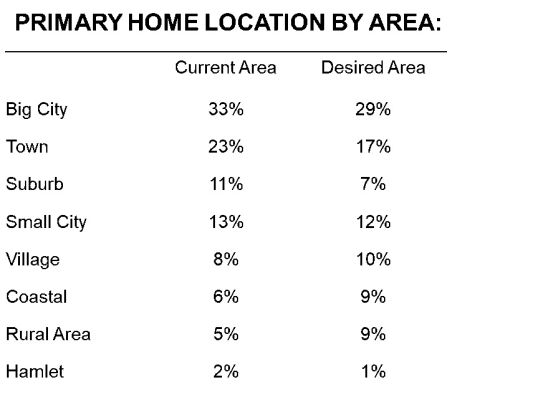
Take 5…. Dining rooms
We’ve picked some homes with delectable dining rooms, and not all from the expected period properties.


Where do we want our homes to be and what do we want our homes to look like? How many bedrooms do we need? What about gardens, offices, and playrooms? These are the types of questions that our annual Housing Futures survey has asked since 2013 as we seek to understand the home aspirations of people across the UK, and strive to answer questions around how we want to live now and how will we be living in the future.
As we come to the end of this year and look forward to the New Year, we take a look at the key housing trends that shaped 2021.
What have we focused on in Life Moves: The Next Chapter publication?
This year’s publication Life Moves: The Next Chapter has hopefully provided you with a snapshot of our latest survey analysis as we looked to explore:
What trends did we find?
The Housing Futures survey has allowed us to pick up on the trends impacting our daily home lives over the past eight years. Our survey uncovered new trends, these included:
Are there new housing solutions available to house movers?
This led to us exploring new housing solutions, such as:
What was the impact of COVID-19 on house buying decisions?
We of course, had not foreseen the impact of the global health pandemic of COVID-19 but the subsequent lockdowns and changes in lifestyle did give us time to reflect on the impact that the pandemic was having on us as individuals and our housing needs.
As a result, we did see some surprising headlines:
What’s the ideal home?
The ideal home across the nation was a three-bedroom, detached house that had a conventional room layout and living space with a small private garden. The desired extras inside the home were a utility room and a guest bedroom. And on the themes of the environment and technology, sought after sustainable features included double glazing, high levels of insulation and smart thermostats; whilst sought after tech features included smart leak detectors, smart lighting, smart door locks, smart smoke/monitoring detectors and energy monitors.
Where people want to live
Perhaps not surprising in light of the experiences many had during the pandemic that villages, the coast and rural settings were the most desired locations, which people desired to move to over the next five years.

To find out more about Strutt & Parker research click here.
Strutt & Parker is at the forefront of property and has the privilege of engaging with the complete life cycle of the housing sector. From the house builders, planners, local government, investors, developers, operators, to our residential estate agents helping our clients, to buy, sell and rent the home of their dreams. Interested in buying a new home, find out more about the properties available here.